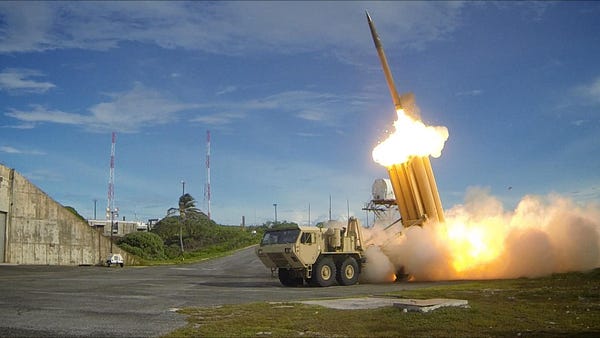Hamsini Hariharan
The acquisition of land for THAAD deployments in South Korea could polarise the whole of East Asia
The acquisition of a golf course for an anti-mssile system in South Korea is the beginning of nuclear tensions in East Asia.
It used to be a golf course. Now it will be a missile base. The South Korean group LOTTE agreed to turn their land over to Korean defence to station US’ terminal High Altitude Area Defence (THAAD), an anti-missile system. The purpose? South Korea agreed to allow the US to deploy THAAD as a deterrent against North Korea’s fifth (and most powerful till date) nuclear test in in 2016.
This is significant because South Korea is an ally of the US and has fallen under the US nuclear umbrella since the 1950s. However, in 1991, the US removed its tactical nuclear weapons from the country. Deploying anti-missile system signifies a resurgence of tensions in Asia. After the land swap agreement, countries around the world sunk the news in as US and South Korea conducted their annual military drills. North Korea, predictably did not take the news well:
The North will “mercilessly foil the nuclear war racket of the aggressors with its treasured nuclear sword,” said an unidentified spokesman for the General Staff of the Korean People’s Army.
Impact on the region
 China has expressed displeasure with the developments of THAAD by suspending LOTTE Group’s construction project in China, cracking down on Korean popstars and cosmetic imports from Korea. Chinese experts arguethat THAAD is futile because North Korean missiles flew at an altitude of 20km while THAAD’s range lies between 40 and 150km.
China has expressed displeasure with the developments of THAAD by suspending LOTTE Group’s construction project in China, cracking down on Korean popstars and cosmetic imports from Korea. Chinese experts arguethat THAAD is futile because North Korean missiles flew at an altitude of 20km while THAAD’s range lies between 40 and 150km.
However, THAAD is not merely a deterrent- its proximity to China means its radar will also be able to track some Chinese (and possibly Russian) missiles- a legitimate enough reason for both countries to be upset. Russia also mistrusts US intentions for deploying THAAD in South Korea as evidenced by the statement of the Russian ambassador to Seoul:
“We regard this as further efforts by Washington to create a new regional segment of the United States’ global missile defense in Northeast Asia near the Russian border,” he said. “This is a direct threat to the security of our country, because the main aim of the US global missile defense is to minimize the effectiveness of Russia’s missile potential.”
An important regional player to keep an eye on is Japan. Japan which has also been under the US nuclear umbrella, has over the last few years been looking at ways of providing its own defence if its friends fail to measure up. The first step was the amendment of its Constitution which allowed for the formation of the Japanese Self Defence Force. Japan is also considering deployment of the THAAD missiles to deter threats from North Korea. It even constituted a committee to the same effect.
Another important point to remember is that the THAAD missiles have already been deployed in the Asia-Pacific; in Guam where it has beenstationed since 2013 and has been permanently deployed there since 2016.
The land swap is important at a time when Asian allies of the US have to deal with the new political developments in the United States. Trump, during the first Presidential debate, had labelled Japan and South Korea as free riders of American defence.
Remember Star Wars? It was the nickname of the US’ anti missile system in the 1980s.
Way Forward
The THAAD is supposed to be deployed by June 2017 but the land swap has shown that the THAAD is still in its infancy and there are many issues with it. Protests have erupted in South Korea with some residents in the area even suing the defence ministry. The impeachment trial of Park Gen-heuye has also led to questions about the necessity of the anti-missile system, which the opposition parties were against.
With respect to larger geopolitics, China’s relations with North Korea and South Korea over the next few months will be important to watch. The Deployment of THAAD could not only amplify the nuclear tensions in the Korean peninsula but in East Asia as a whole. In the absence of trust or any country beginning multilateral talks, the entire region could be polarised on the issue. And it would have all begun with a golf course.

No comments:
Post a Comment